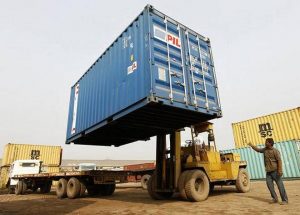
US Expresses Concern Over “High” Indian Tariffs, 6 Per Cent Drop In 2017 Trade Deficit
Washington: Compared to the previous year trade deficit between India and the United States have dropped to almost six per cent in 2017, the US Trade Representative (USTR) has said. The agency continued to talk about issues like market access and high tariffs on several American products being imported into India.

“The US goods trade deficit with India was USD 22.9 billion in 2017, a 5.9 per cent decrease (USD 1.4 billion) over 2016,” said the National Trade Estimate 2018 released by the USTR. India is one of the few countries with which US’ trade deficit has decreased in the last one year. US goods exports to India were USD 25.7 billion, up 18.7 per cent (USD 4.0 billion) from the previous year. The corresponding US imports from India were USD 48.6 billion, up 5.6 per cent. India was the US’ 15th largest goods export market in 2017,” the annual report said.
In a very similar way, US exports of services to India stood up at an estimation of USD 23.1 billion in 2017 and US imports were estimated to be USD 28.7 billion. Sales of services in India by majority US-owned affiliates were valued at USD 24.5 billion in 2015 (latest data available), while sales of services in the United States by majority India-owned firms were valued at USD 14.7 billion, the voluminous yearly report said.

US foreign direct investment (FDI) in India (stock) was stood up at the value of USD 32.9 billion in 2016 (with latest data available), a significant 10.0 per cent increase from 2015. US direct investment in India is led by prof., scientific, and tech. services, manufacturing, and wholesale trade, it noted.
But the Trump administration continued its stance of harping India on a range of issues, including market access, high tariff and protection of intellectual property.
“In 2017, India implemented price controls on coronary stents and knee implants that do not fully differentiate for advanced technologies within a product class,” it said.
National companies from the US have already applied to withdraw technologically advanced products from the market, but the requests were rejected, forcing the US to sell certain products on a loss basis. India has given an indication that it may apply similar price controls on additional medical devices, it said.
In accordance to National Trade Estimate, India continues to maintain some of the highest average tariff rates around the globe. The large gap provided between India’s WTO bound and applied tariff rates gives India a chance to make frequent adjustments to the level of protection provided to domestic producers by modifying tariff rates, it said.
As an example, in 2017 India increased tariffs over pulses-export from zero to 30 and 50 per cent. India also raised tariffs on certain high-tech information and communication technology consumer end products from zero to between 10 and 20 per cent. The US companies have made it a point to raise significant concerns with these actions, it alleged.
“The United States continues to raise these concerns through bilateral engagement with the Indian government, including through the US-India Trade Policy Forum,” the USTR agency said.
The report further says, the US has actively asked for bilateral and multilateral opportunities to open India’s market, and the government of India has pursued on the track of ongoing economic reform efforts. But the fact is, US exporters still have to encounter tariff and nontariff barriers that impede imports of US products into Indian markets, it said.
You May Also Read: ‘Babas’ Give Up Narmada Agitation After Getting MoS Status